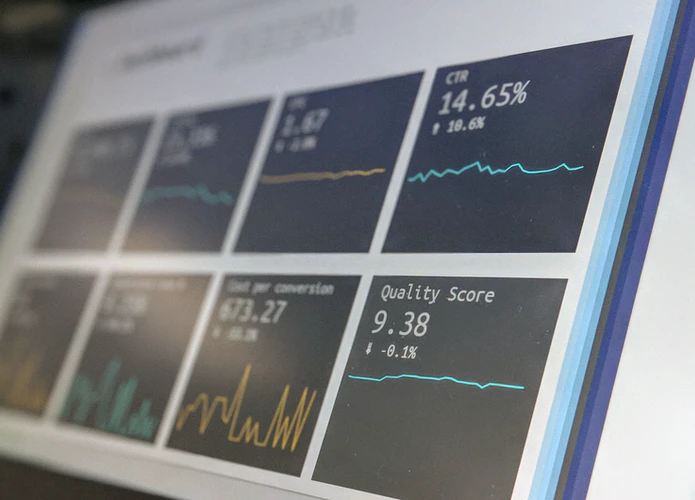The 3 principles of Full Experience™ and how it differs to Full-Service
Last week Space & Time announced a new proposition around Growth Marketing and the launch of four strategic business divisions (Media, Technology, Performance Creative and Training) to support the next stage of our journey. Our Managing Director, Chris Jones, has previously outlined the importance of a relevant engagement model that conforms to unique client challenges, both now and in the future, and a breadth in capability that enables brands to interact with their end consumer at every stage of their journey to purchase, and beyond.
At Space & Time, we are pioneering Full ExperienceTM . Chris has pulled out the top 3 key components and how they create a point of difference vs a ‘Full-Service’:
- The art of tensility
Back in 2019, when I attended Google’s Agency Leaders Programme in Paris, the word ‘tensility’ was used in several of the group sessions. Usually, this was in the context of a data or technology stack, but I felt it was relevant on a broader level too. Even before COVID it was clear the landscape was shifting. The fundamentals still exist, you have your full-service agencies, and you have specialists, but each model shares upsides and downsides in equal measure. Full-service has the vantage point to see different elements of a client’s operation, adding opportunities to find efficiencies or improvements but with less direct or consistent expertise in the areas identified, which is where specialists come in. The inevitable downside then being the risk of a siloed approach, delivered without the context of everything else that’s happening across the organisation.
Forrester’s Global Business Technographics Survey in 2018 identified that 36% of marketing stakeholders felt “improving their data and analytics” was their top priority, featuring ahead of “developing new products/services” and “strengthening of the company brand”. This is no real surprise, but I do think, given data and analytics technologies are nothing new, it does highlight the requirement within brands to convert disparate data layers into meaningful data that creates action, not just information.
It’s therefore key that an agency has both a holistic view and an equally keen eye on the mechanics beneath the surface. Our newly-launched Full ExperienceTM model is designed to work dynamically. We have capability that covers the entire customer experience, akin to full-service, but with the retained specialisms within each capability to allow for a deep understanding of the challenge and the right solution, reinforced with knowledge of a client’s wider eco-system. Each capability is organised into a business division (Media, Technology, Performance Creative or Training), each with the in-built autonomy to innovate and drive transformation but with the same systems and processes in place to build a seamless connection across the customer experience. This structure, combined with our award-winning training & development program, Space Academy, ensures the relevance of each solution or deliverable, ultimately creating an inherent tensility in how we work with clients.
- Alignment depends on the right model
In a recent article, Matt Read, our Head of Digital and Business Director for training, outlined his thoughts on the right approach to in-housing. Matt referred to “bothism” and how agencies and brands shouldn’t be expecting a ‘one-size-fits-all’ or even an ‘on or off’ approach.
A key component of Full ExperienceTM and a clear point of difference from full-service is the ability to flex capability to suit a client’s unique challenges. For some brands it makes sense to own the technology infrastructure, but they require agency expertise on sourcing and embedding the technology. For others there may be a desire to reduce fixed costs and manage additional services outside of their organisation but with a partner that is dialled into their business. These decisions are rarely made at a macro level. More often, a tailored approach focused on identifying the capability required and the model that will enable them to achieve their goals most effectively is required. We call this Strategic and Commercial Alignment. The result is not just working with a client to understand their business, the industry in which they operate and their own unique set of challenges and objectives, but also road-mapping this over the long-term so all involved are clear on what the goal is. The right model is then shaped around this, creating a partnership that is truly aligned.
- Growth Marketing
I’ve talked quite extensively already about the value of Growth Marketing, why it’s truly relevant today and in the future, and how it is a genuine representation of what we do and how we work with clients. The importance, though, of combining this with an engagement model that ensures that agency and client are strategically and commercially aligned is a necessary piece of the jigsaw.
Our on-going pursuit of value, client growth and all the virtues of Growth Marketing can only really be achieved when the partnership is built on clear objectives that both the agency and client understand. In another survey from Forrester (IHAF) in 2018, they highlighted only 44% of internal teams and external agencies feel like they collaborate with each other. A conventional full-service model will often have a rigid operational structure and inflexible means of delivering a product or service. This naturally presents obstacles for the agency to really get under the skin of a client’s operation and dilutes the outcomes that Growth Marketing can provide.
We have purposely developed Full ExperienceTM and Growth Marketing to work in tandem. Likening it to a car, the former acting as the key componentry for progress – the steering, the throttle, the gear selector. The latter is the engine, creating the propulsion that takes a client where they want to go. Both are mutually dependent but combined they are highly relevant in today’s world.
Read my recent article on Growth Marketing here: https://spaceandtime.co.uk/blog/building-on-solid-foundations/
Related posts

21.03.24
EVENT: How to overcome e-commerce growing pains on the journey to £5m

07.03.24
Consent Mode and user privacy best practice

07.03.24
GA4 Essential Guide

22.07.21
Google Ads in a cookieless future

22.02.21
A cookieless future: 5 things marketers should be doing

17.02.21

